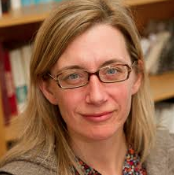
Professor, Renaissance Art
Animal Sightings: Art, Animals, and Court Culture in Early Modern Europe, 1450-1550
What did it mean to be ‘human’ and ‘nonhuman’ in early modern Europe? How do the experiences of representing, viewing, and using nonhuman animals and animal products in artworks make the categories of ‘human’ and ‘animal’ meaningful? This project seeks to address these questions by considering the pictorial use of animals in courts in northern Italy and Germany between 1450-1550. Court environments—elite sites that seemingly had an investment in a hierarchical paradigm of human (and heterosexual male) superintendency—actually cultivated complicated and often ambiguous social orders and gender roles that promoted and depended on similarly shifting natural orders. The work of artists, poets, musicians, and natural philosophers employed at court demonstrated a complexly ambivalent experience of nonhuman animals as beings who share the world with humankind. This synergetic approach occurs just prior to the emergence of more systematic, hierarchical scientific study and collection of naturalia and widespread commodification of exotic objects and people.